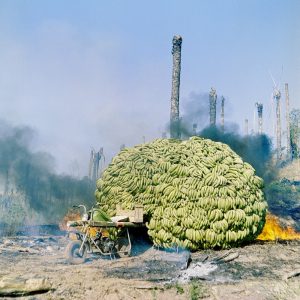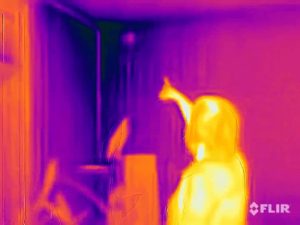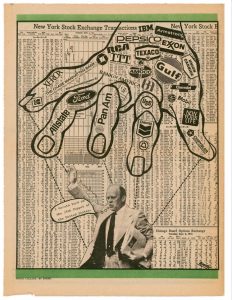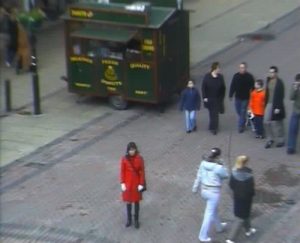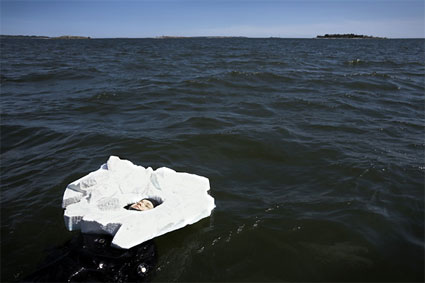 Riitta Ikonen is one very talented Finnish graduate from the Communication Art & Design department at the Royal College of Art in London. I discovered her work at the Summer show last June and fell in love with her costume projects. I wasn’t the only one. She received an Helen Hamlyn Design for our Future Selves award for her project Commuter Thrival, a communication campaign that aims to raise awareness of the issues surrounding public transport in London through posters visualising people’s emotions with quirky costumes.
Riitta Ikonen is one very talented Finnish graduate from the Communication Art & Design department at the Royal College of Art in London. I discovered her work at the Summer show last June and fell in love with her costume projects. I wasn’t the only one. She received an Helen Hamlyn Design for our Future Selves award for her project Commuter Thrival, a communication campaign that aims to raise awareness of the issues surrounding public transport in London through posters visualising people’s emotions with quirky costumes.
The description of her work is delightful: My work is concerned with the performance of images, through photography and costume design. Certain items, usually small and insignificant, excite me to the point where I have to wear them and then document that process. The super- garments I make open up new experiences. In my costumes tremendous things happen – to me and to the people I work with. Today I exploded an egg in the microwave. Next, I want to make an egg costume.
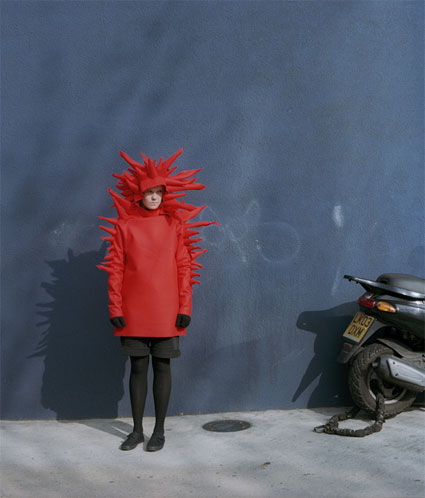
How could i not interview her?
Many of your works involve costumes, so one would hastily assume that you are a fashion graduate. In reality, you graduated in Communication Art and Design. Why didn’t choose a career in fashion? And why do you often choose costume as a medium to transmit your messages, concerns and ideas?
There was a sewing machine in my bedroom when I grew up, and I learned to use it from a very early age. I still like the illusion that I can maintain and make ANYTHING with the skills from my hands. I’m by nature curious about this potential, and think my hands still hold the most decision making power in me.
I never rejected the chance of my work being fashion, but thought a fashion degree would have been too narrow for what I wanted to figure out. I wanted to embrace the vernacular through the carefully constructed images in which the outfits form only a part of the story. In a way I did choose fashion, the outfits are vital for the work, just not the pinnacle of it.
Communication Art and Design course didn’t tie me down to anything too specific and offered seemingly boundaryless opportunities. (Before the RCA I did BA in Illustration in Brighton celebrating the invention of all things Nylon as my final project.) At the moment I do some live commission work, but I feel most at ease printed and mounted quietly on the wall.
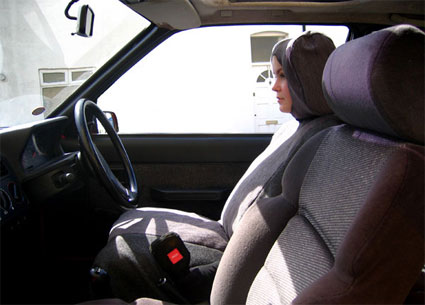 I did my BA in Illustration in Brighton celebrating the invention of all things Nylon as my final project
I did my BA in Illustration in Brighton celebrating the invention of all things Nylon as my final project
Commuter Thrival is a ‘communication campaign that aims to raise awareness of the issues surrounding public transport through a series of posters visualizing people’s emotions with custom-made costumes’.
Did you work on this project with the sole aim to visualize the issues at stake or did you think that these costumes could actually have some therapeutic or cathartic quality on commuters seeing them?
As usual, the costumes were made to communicate the issue in the image and not as a live piece. I wanted to visualize the issue to an extent. Eliminating mental space harassment in the Underground is vital. The campaign is meant to be shown on a London Underground platform completely stripped from any extra information/ adverts etc. I wanted to leave enough space for people’s own interpretation. In terms of how the posters are situated I tried to give people what they were lacking. The commuters are doing pretty well in the absurdity of the rush hour tunnels, so the campaign is an ode and appreciation to the performers of this daily operation.
Could you describe us which elements in the costumes you design correspond to the 3 issues you wanted to engage with?
I wanted the images to have a silent potential, giving people headspace in the lack of physical space/ mental cool in the heat of the moment morning rushing.
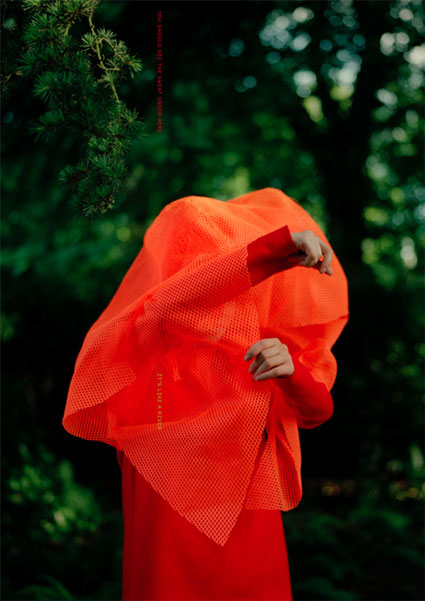
1. Being hot / Keeping cool ‘You should see the sweat under here, it’s like a river‘
After some tests the heat costume kept the fiery hot colour and the stiff basic shape, but got much simpler cut and colouring. It is an abstract version of what it used to be- a winged slouch like structure with brightly multi coloured outside.
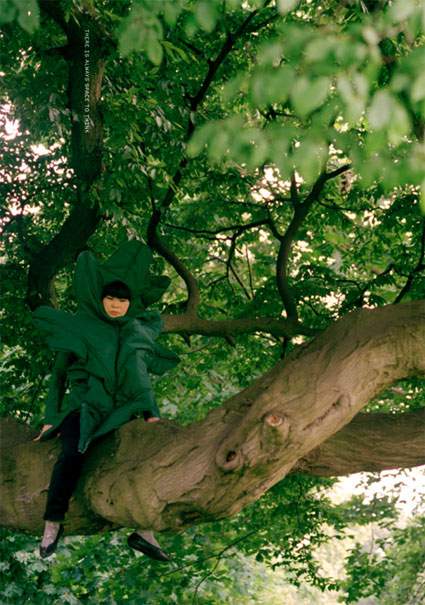
2. Lack of space – Privacy ‘There is always space to think‘
Daydreaming is solid place to seek solace from when your head is squished into a stranger’s armpit in the tube. I thought this would not be a bad place to be instead. An image for fantasizing the journey away.
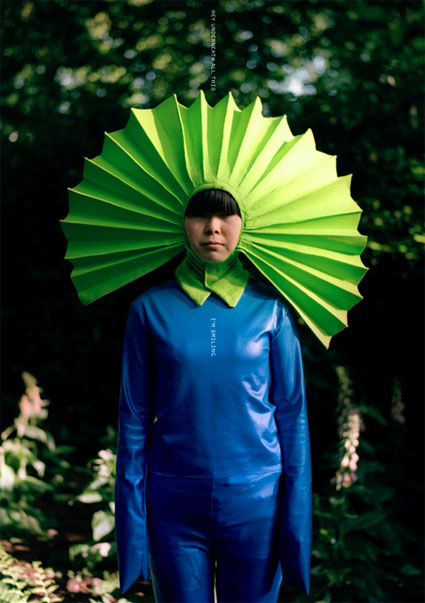
3. Lack of socialising – Fun ‘Hey underneath all this I’m smiling‘
Most people I interviewed said they weren’t keen on making contact with their fellow passengers, which is an awful waste of casual face to face socializing. I was looking into animal shields, scares, warning systems and colours for ways to attract and also repel (you wouldn’t want to look too attractive waiting for the night bus in back end of Brixton). A frilled lizard has an excellent collar which I borrowed for this image. It can spread it out for scaring or keep flat for inconspicuous look. The slippery suit is for slick crowd movements (- how smooth it would be if everybody wore them!)
Your practice also involves photography. How much staging and preparation did the Commuter Thrival project require? Could you explain us how you selected the location, the model, the light and other elements which played an important role in your photos?
The project started with an in depth user research investigation with interviews and involvement all of which provided the starting point for the project.
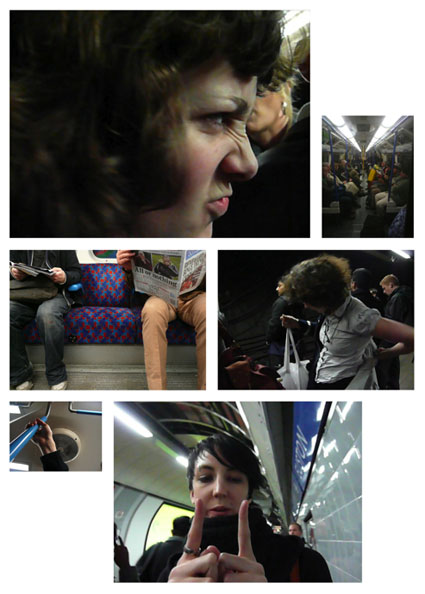
As I’m usually in front of the camera (only for the heat image for this project though) I work with a trusted photographer, who has quite a strong say on the final images. Most things to do with the image happen before the shoot of course: research, material hunting, costume making, fittings, sketches and location scouting. I wanted the images for this campaign to have nothing to do with the tube, but anything outside it- life, nature etc. Altogether four leaves were sitting in the tree at one point of the shoot, (I had selected a colourful mix of men and women), once again, less was more, and Hitomi on her own in the tree spoke loudest for the lack of space. She is great in front of the camera -perfect stern look.
We were lucky on the day of the shoot, especially for the heat we managed to hit on a great sunset in Hyde Park. A lot depends on scheduling, weather and luck when working on low budget. Working on film we can’t see the images on the spot, so if things are not right the whole team gets to travel back and forth. (I’m amazed I still have friends with all I’ve put them through…)
Apart from colour adjustments and cropping, I don’t photoshop the costumes on the images, they need to be just right on film or we shoot again. For a project called Bird and Leaf we have been traveling to the same location for over a year now with the photographer to get the perfect image for the series… finally, earlier this year it snowed one day when we were all set:
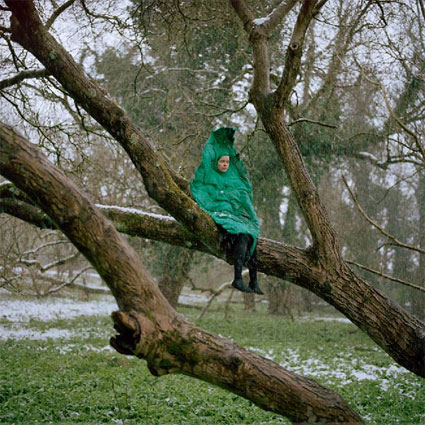 Looking at your portfolio, i had the feeling that humour is important to you. What part does humour play in your work? How does it help communicating an issue?
Looking at your portfolio, i had the feeling that humour is important to you. What part does humour play in your work? How does it help communicating an issue?
Humour is vital. My work is quite telling of my character. A little humour is very compelling and has access to such a broad audience beyond language barriers. Perhaps humour with my work has a bit to do with being overseas and not quite part of this team here, I’m nearly seeing it like everybody else. Very almost. For more murky issues like global warming the message can cut through a lot of fluff if the humour is done well.
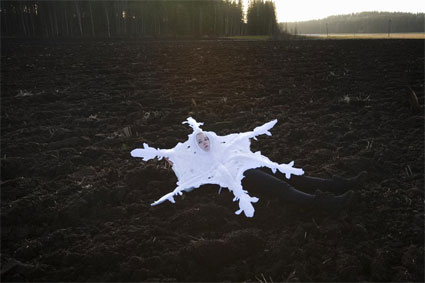 …Setting out to do the Snowflake was heartbreaking rather than humorous though.
…Setting out to do the Snowflake was heartbreaking rather than humorous though.
I read somewhere that you received an Helen Hamlyn award for Commuter Thrival. Is it true? Does it mean that you are going to push the project further or that you have other plans for it?
It is true, Anja Schaffner, Valerio Di Lucente and I received a Michael Peters award for interdisciplinary collaboration for Commuter Thrival. The project will go public hopefully soon, I’m in talks with the transport for London to get it to the tube in its full glory. It would be very exciting to see it go ahead.
Thanks Riitta!
All images courtesy of the artist.

